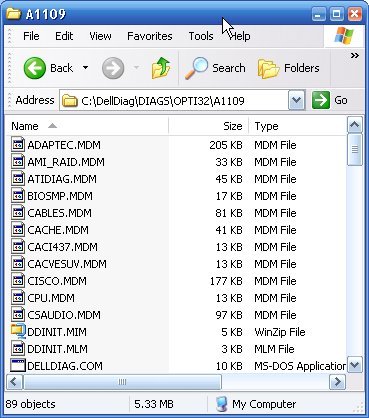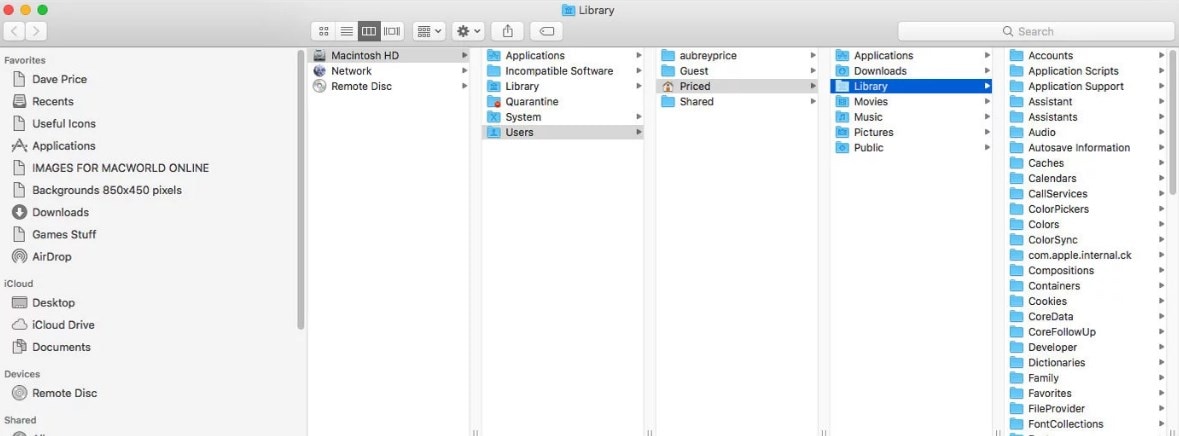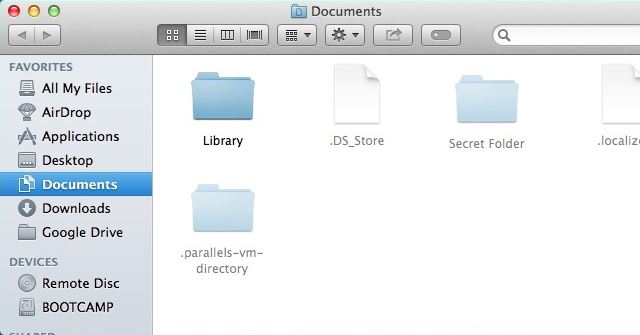Updates
Added shortcut method available on macOS Sierra keyboard.
Method of showing/hiding hidden files tested and working on macOS Sierra.
Method of showing/hiding hidden files tested and working on Mac OS X El Capitan.
It seems like every day I search Google for the command to show hidden files on Mac OS X, not to mention Googling for the command to then hide those hidden files a few minutes later.
There are thousands of invisible files on your Mac but usually the ones we're interested in really just hidden within the Library folder. Without taking certain steps, you can't see this in your. Launch the application and go through the main screen options Click on 'Deleted File Recovery' option to regain hidden files that have been deleted Select 'Lost File Recovery' option to restore hidden files that have been lost on your MacBook Pro The recovery program scans MacBook Pro.
Today I decided to make a short and easy to remember alias to speed up the process. All I need do now is type showFiles and hideFiles whenever I need to show/hide OS X's hidden files. Here's how you can do it too.
The Quickest Way to Show/Hide Hidden Files
Since the release of macOS Sierra, when in Finder, it is now possible to use the shortcut:
Press once to show hidden files and again to hide them. If you're using a version earlier than macOS Sierra, see Show/Hide Hidden Files using Terminal Aliases to setup a toggle command via terminal.
Thanks to Guido Schlabitz for making me aware of this new shortcut.
Show/Hide Hidden Files the Long Way
The long way to show hidden Mac OS X files is as follows:
Hidden Folders Macbook
- Open Terminal found in Finder > Applications > Utilities
- In Terminal, paste the following:
defaults write com.apple.finder AppleShowAllFiles YES - Press return
- Hold the 'Option/alt' key, then right click on the Finder icon in the dock and click Relaunch.
This will show all hidden files. To hide them again, follow the same steps but replace the Terminal command with:
It's not the longest set of instructions or the biggest command to commit to memory but if you're doing this a lot, it's worth spending a few minutes now to save yourself a lot more time in the future.
Show/Hide Hidden Files using Terminal Aliases

A Terminal alias is a name or shortcut for one or multiple commands. Using an easy to remember alias, we can turn the above four step process into just one.
An alias can be made temporarily (just for the use of one terminal session) or permanently. As we want this to be a shortcut used now and in the future, let's make it permanent:
- Open Terminal found in Finder > Applications > Utilities
- In Terminal, paste the following:
sudo nano ~/.bash_profile - Enter your Mac's administration password if required, then hit return
- At the bottom of the open .bash_profile file, paste the following:
alias showFiles='defaults write com.apple.finder AppleShowAllFiles YES; killall Finder /System/Library/CoreServices/Finder.app' Below that, paste the following:
alias hideFiles='defaults write com.apple.finder AppleShowAllFiles NO; killall Finder /System/Library/CoreServices/Finder.app'- Press ctrl + O and hit return to save the file
- Press ctrl + X to exit the file and return to the command line
- In Terminal, paste the following:
source ~/.bash_profileto refresh your profile and make the aliases available
Now when you want to show hidden files, all you need type in Terminal is showFiles, then hideFiles when you want to hide them.
If you want to modify the behaviour or alias names, let's take a closer look at the commands you just added:
alias tells Terminal we're adding a new alias.

showFiles is the name of the alias. Change this to what you wish.
We then give the alias two commands. The first being:

This is the command to show hidden files and is ended with a semi-colon ; so we can then use the second command:
This will relaunch the Finder (to replicate the step of holding the 'Option/alt' key then right clicking the Finder icon in the dock).
Conclusion

With the aliases set up, all you need do in the future is type showFiles and hideFiles to show and hide Mac OS X's hidden files respectively.
Aliases can be used to speed up your interaction with the Terminal. Set up an alias for navigating to your most used directories, to commit to a GitHub repo and so on.
Ian Lunn is a Front-end Developer with 12 years commercial experience, author of CSS3 Foundations, and graduate of Internet Technology. He creates successful websites that are fast, easy to use, and built with best practices.
Hiding information is quite reasonable if you share your computer or laptop with others. Many users prefer this technique to password protection data on MacBook Pro. Like other Mac computers, MacBook Pro also facilitates its users to hide essential files and folders that they want to keep confidential. However, it may cause a problem to the users also if they forget about hidden file's location or when hidden files are missing due to any unknown reason. This page is about the simplest solution of finding hidden files on MacBook Pro laptop. Now you can also regain your important hidden files on MacBook Pro with ease.
Yes, you can unhide any file or folder in your MacBook Pro by making few changes in the system setting. For this intention, you need to run a command in Terminal window. See how you can find hidden files:
Launch Finder -> Open the Utilities folder -> Open a Terminal window -> Type or paste following line on Terminal 'SUDO defaults write com.apple.Finder AppleShowAllFiles YES; killall Finder' and press Enter -> Quit Terminal ->
Now, click on the Finder icon to re-launch the new instance so that new settings can take effect. As you open Finder no any file or folder will remain invisible on your MacBook Pro. Though, you can explore all the hidden files by using above method what if hidden files aren't available on your MacBook Pro hard drive? In few scenarios, users forget about hidden files and lose them accidentally under following circumstances:
Hidden Files On Macbook
- You may forget the location of files and folders after hiding them
- With absent mind, you may delete folder that is containing vital files in the hidden mode
- You may lose all the hidden files after formatting any volume in MacBook Pro hard drive
Therefore, if you are running into such crisis and unable to find your essential files that you had kept in hidden mode on your MacBook Pro, it's better to try with proficient hidden files recovery software. By utilizing such program, you can make it quite simple to access files that have been deleted or turn invisible.
Hidden file recovery tool for MacBook Pro
Yodot Mac File Recovery is the right application to retrieve hidden files on MacBook Pro. It is one of the most trusted programs used by Mac OS X users to regain lost or deleted files after diverse data loss scenarios. You can employ this utility if you don't know how to find lost files on MacBook Pro after you forget the location of hidden files, virus attacks, accidental formatting or emptying Trash on MacBook Pro. You can even utilize this tool to get back all kinds of Microsoft Office documents, iWork suite files, basic media files (music files, videos, photos) etc from MacBook Pro, MacBook Air, iMac, Mac Mini and Mac Pro desktop and laptop hard drives running with Mac OS X 10.5 X (Leopard), Mac OS X 10.6 (Snow Leopard), Mac OS X 10.7(Lion), Mac OS X 10.7 (Mountain Lion) and Mavericks OS versions.
Simple steps to access hidden file finder tool on MacBook Pro
Macbook Folder Icon

A Terminal alias is a name or shortcut for one or multiple commands. Using an easy to remember alias, we can turn the above four step process into just one.
An alias can be made temporarily (just for the use of one terminal session) or permanently. As we want this to be a shortcut used now and in the future, let's make it permanent:
- Open Terminal found in Finder > Applications > Utilities
- In Terminal, paste the following:
sudo nano ~/.bash_profile - Enter your Mac's administration password if required, then hit return
- At the bottom of the open .bash_profile file, paste the following:
alias showFiles='defaults write com.apple.finder AppleShowAllFiles YES; killall Finder /System/Library/CoreServices/Finder.app' Below that, paste the following:
alias hideFiles='defaults write com.apple.finder AppleShowAllFiles NO; killall Finder /System/Library/CoreServices/Finder.app'- Press ctrl + O and hit return to save the file
- Press ctrl + X to exit the file and return to the command line
- In Terminal, paste the following:
source ~/.bash_profileto refresh your profile and make the aliases available
Now when you want to show hidden files, all you need type in Terminal is showFiles, then hideFiles when you want to hide them.
If you want to modify the behaviour or alias names, let's take a closer look at the commands you just added:
alias tells Terminal we're adding a new alias.
showFiles is the name of the alias. Change this to what you wish.
We then give the alias two commands. The first being:
This is the command to show hidden files and is ended with a semi-colon ; so we can then use the second command:
This will relaunch the Finder (to replicate the step of holding the 'Option/alt' key then right clicking the Finder icon in the dock).
Conclusion
With the aliases set up, all you need do in the future is type showFiles and hideFiles to show and hide Mac OS X's hidden files respectively.
Aliases can be used to speed up your interaction with the Terminal. Set up an alias for navigating to your most used directories, to commit to a GitHub repo and so on.
Ian Lunn is a Front-end Developer with 12 years commercial experience, author of CSS3 Foundations, and graduate of Internet Technology. He creates successful websites that are fast, easy to use, and built with best practices.
Hiding information is quite reasonable if you share your computer or laptop with others. Many users prefer this technique to password protection data on MacBook Pro. Like other Mac computers, MacBook Pro also facilitates its users to hide essential files and folders that they want to keep confidential. However, it may cause a problem to the users also if they forget about hidden file's location or when hidden files are missing due to any unknown reason. This page is about the simplest solution of finding hidden files on MacBook Pro laptop. Now you can also regain your important hidden files on MacBook Pro with ease.
Yes, you can unhide any file or folder in your MacBook Pro by making few changes in the system setting. For this intention, you need to run a command in Terminal window. See how you can find hidden files:
Launch Finder -> Open the Utilities folder -> Open a Terminal window -> Type or paste following line on Terminal 'SUDO defaults write com.apple.Finder AppleShowAllFiles YES; killall Finder' and press Enter -> Quit Terminal ->
Now, click on the Finder icon to re-launch the new instance so that new settings can take effect. As you open Finder no any file or folder will remain invisible on your MacBook Pro. Though, you can explore all the hidden files by using above method what if hidden files aren't available on your MacBook Pro hard drive? In few scenarios, users forget about hidden files and lose them accidentally under following circumstances:
Hidden Files On Macbook
- You may forget the location of files and folders after hiding them
- With absent mind, you may delete folder that is containing vital files in the hidden mode
- You may lose all the hidden files after formatting any volume in MacBook Pro hard drive
Therefore, if you are running into such crisis and unable to find your essential files that you had kept in hidden mode on your MacBook Pro, it's better to try with proficient hidden files recovery software. By utilizing such program, you can make it quite simple to access files that have been deleted or turn invisible.
Hidden file recovery tool for MacBook Pro
Yodot Mac File Recovery is the right application to retrieve hidden files on MacBook Pro. It is one of the most trusted programs used by Mac OS X users to regain lost or deleted files after diverse data loss scenarios. You can employ this utility if you don't know how to find lost files on MacBook Pro after you forget the location of hidden files, virus attacks, accidental formatting or emptying Trash on MacBook Pro. You can even utilize this tool to get back all kinds of Microsoft Office documents, iWork suite files, basic media files (music files, videos, photos) etc from MacBook Pro, MacBook Air, iMac, Mac Mini and Mac Pro desktop and laptop hard drives running with Mac OS X 10.5 X (Leopard), Mac OS X 10.6 (Snow Leopard), Mac OS X 10.7(Lion), Mac OS X 10.7 (Mountain Lion) and Mavericks OS versions.
Simple steps to access hidden file finder tool on MacBook Pro
Macbook Folder Icon
- Download Yodot Mac File Recovery software on your MacBook Pro and execute the setup to omplete the installation
- Launch the application and go through the main screen options
- Click on 'Deleted File Recovery' option to regain hidden files that have been deleted
- Select 'Lost File Recovery' option to restore hidden files that have been lost on your MacBook Pro
- The recovery program scans MacBook Pro and displays all Volumes
- Choose the Volume from where hidden files are to be restored back
- Now the software repeats the scanning operation and displays all hidden files that were missing or deleted on your MacBook Pro
- Mark the files that are to be saved and hit on 'Next' button
- The software facilitates you to see recovered files in ‘Data View' and ‘File Type View' prior to saving them
- At last, click on Save button to preserve restored files to the desired destination location
Things to Remember:
- Before you format any drive on MacBook Pro, make sure you have not made any folder or file hidden on that drive
- Keep your MacBook Pro protected from harmful viruses by using advanced anti-virus protection
Hidden Files In Download Folder Macbook Pro Windows 7
Related Articles
Applications Folder Macbook
Learn how to find disappeared files from MacBook by going through this page.
Visit this page and get suitable method to restore files disappeared from your Mac desktop.
How to regain lost Pages documents on Mac? Is this your inquiry, then here is the appropriate solution to your problem.
Navigate this page to find missed files from iMac hard drive with ease.
Go according to steps explained in this page to restore hidden files from Mountain Lion system.
Go to this page to find out the best approach for restoring lost Apple Notes on Mac OS X.
Visit this page to know how exactly lost files can be recovered from 32GB ADATA DashDrive Elite UE700 USB drive on Mac.
Click here to know about best method for recovery of lost files from external hard drive on Mac OS X.
An advanced and realistic solution for easy restoration of lost files from a flash drive on Mac OS X.
This page unfolds the most efficient tool to restore files lost from MacBook Pro notebook.
Wondering how to recover Sticky Notes on MacBook? Then navigate through this page to know more about it.
Do you need help to restore lost files from Mac OS X? Then read this article.
Read this short article and get smart solution to recover hidden folders on Mac computers with great ease.

